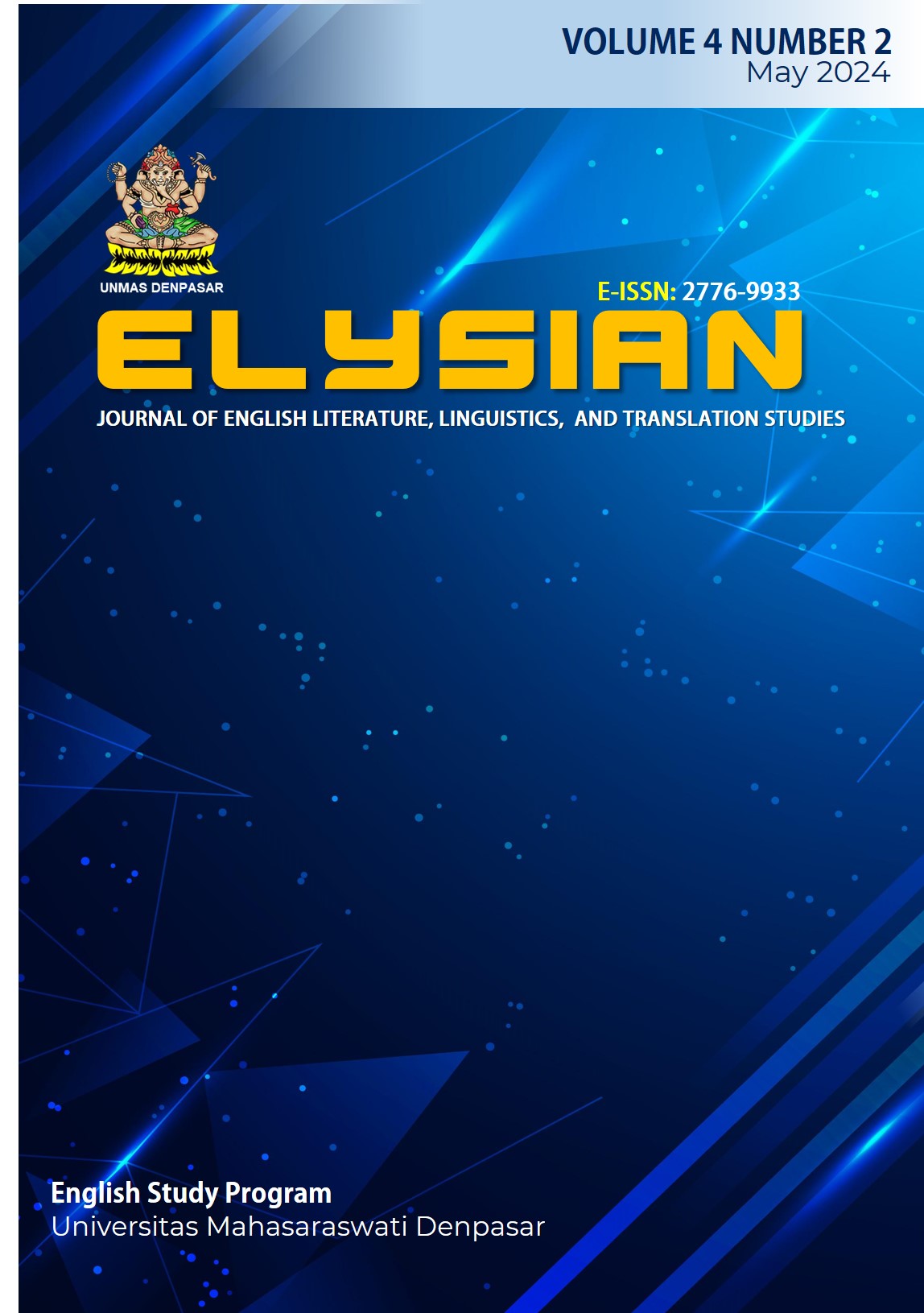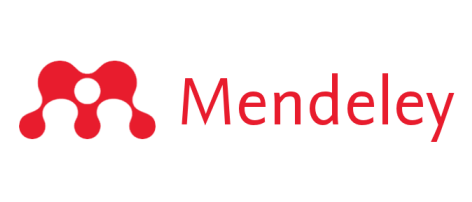Types of Figurative Language Found in English Slogan Beverage Products
DOI:
https://doi.org/10.36733/elysian.v4i2.5140Abstract
This study aims to identify and analyze the types figurative language found in English Slogan beverage advertisements, especially about the types and meanings of figurative language that contained in English Slogan. The problem discussed in this study are (1) what types of figurative language found in English Slogan of beverage advertisements, and (2) how the meaning of the figurative language that contained in English sloganof beverage advertisements. Thus, in analyzes the data the researcher used the descriptive qualitative method by using theory proposed by Kennedy (1983) and Leech (1981). As the result of this analysis the researcher found that are 4 types of figurative language in English slogan of beverage advertisements. They are: comparative 14 data or 48,28%, contradictive 9 data or 31,03%, and correlative 6 data or 20,69%. Comparative figurative language consists of Personification, Metaphor and Simile. Contradictive figurative language consists of Hyperbole, Litotes, Paradox and Irony. Correlative language consists of Metonymy, Synechdoche, Symbol, Allusion and Elipsis. For the meaning of the figurative language contained in English slogan of beverage advertisements the researcher found 2 types of meaning, such as; conceptual meaning 1 data or 20% and the connotative meaning 4 data or 80%.
Keywords: Figurative Language, English slogan, Products .
References
Reference
Andi Asrifan 2021 entitled Semantic Analysis on the use of English Language Slogan. Journal.
Berna Hendriks, Frank van Meurs, Chantal Poos, entitled Effects of difficult and easy English slogans in advertising for Dutch consumers.
Gluckberg (2001, p. 4) figure of speech in which a name or descriptive word or phrase is transferred to an object or action.
Kennedy, X. (1983). Literature: An Introduction to Fiction, Poetry, and Drama.
Peter. (2002). Figurative language and semantics.
Picken (2007, p. 2) figurative language is noticed and frequently interpreted inconsiderable detail, and evaluation takes place.
Septin Ambarwati, Cucut Annaningtyas (2020). The Function of Advertisement Slogan in the Billboard. Journal.
Skorupa, P., & Dubovičienė, T. (2015). Linguistic Characteristics of Commercial and Social Advertising Slogans. Coactivity: Philology, Educology, 23(2), 108–118. https://doi.org/10.3846/cpe.2015.275.
Tomislav Skracic, Peter Kosovic 2016 entitled Linguistic Analysis of English advertising slogans in Yachting. Journal.
Wardoyo, N. (2015). The Types and Interpretation Figurative Language Used in Pirates of Caribbean on Stranger Tides Movie Manuscript. CNR-ISTI Technical Report, 3(2), 356–369.
Reference
Andi Asrifan 2021 entitled Semantic Analysis on the use of English Language Slogan. Journal.
Berna Hendriks, Frank van Meurs, Chantal Poos, entitled Effects of difficult and easy English slogans in advertising for Dutch consumers.
Gluckberg (2001, p. 4) figure of speech in which a name or descriptive word or phrase is transferred to an object or action.
Kennedy, X. (1983). Literature: An Introduction to Fiction, Poetry, and Drama.
Peter. (2002). Figurative language and semantics.
Picken (2007, p. 2) figurative language is noticed and frequently interpreted inconsiderable detail, and evaluation takes place.
Septin Ambarwati, Cucut Annaningtyas (2020). The Function of Advertisement Slogan in the Billboard. Journal.
Skorupa, P., & Dubovičienė, T. (2015). Linguistic Characteristics of Commercial and Social Advertising Slogans. Coactivity: Philology, Educology, 23(2), 108–118. https://doi.org/10.3846/cpe.2015.275.
Tomislav Skracic, Peter Kosovic 2016 entitled Linguistic Analysis of English advertising slogans in Yachting. Journal.
Wardoyo, N. (2015). The Types and Interpretation Figurative Language Used in Pirates of Caribbean on Stranger Tides Movie Manuscript. CNR-ISTI Technical Report, 3(2), 356–369.








